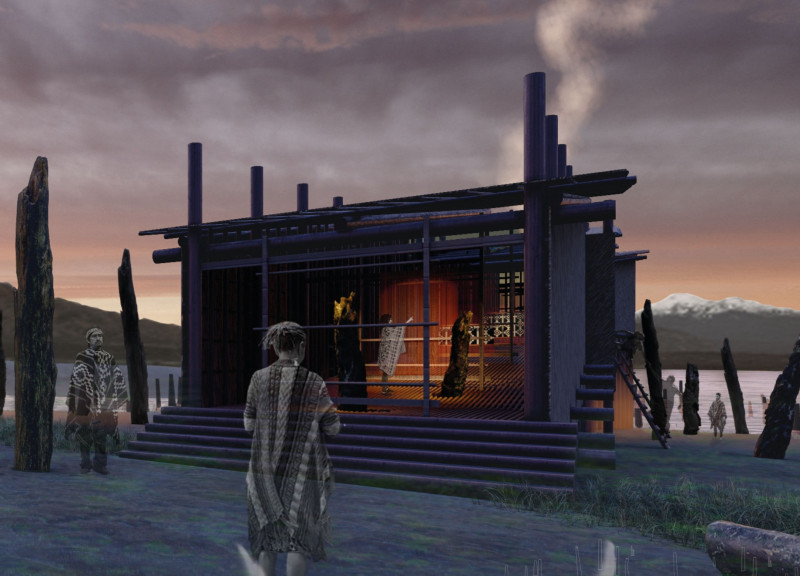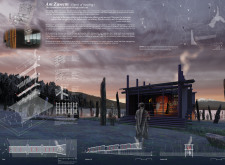5 key facts about this project
"Am Zuwem" is located in the Quilillo Lagoon within National Park Conguillio. The pavilion focuses on the cultural heritage of the Mapuche people, highlighting weaving as a central method of passing down knowledge and fostering community identity. The design merges aspects of nature with stories from the Mapuche culture, creating an environment that invites visitors to interact with the art of textile weaving.
Conceptual Framework
The design is inspired by the mother spider, an important figure in Mapuche mythology that represents the origin of weaving. "Am Zuwem" serves as a celebration of this ancient skill while allowing visitors to explore its significance. The structure features an elevated pathway that encourages movement and discovery, linking physical space with the process of learning about traditional weaving techniques.
Spatial Organization
The pavilion's layout enhances visitor engagement, featuring an elevated pathway supported by wooden piles and frameworks. This design promotes physical movement through the space while symbolizing personal growth associated with learning. Along the path, the inclusion of colors, spins, and figures reflects the attributes of Mapuche looms, called Witrales. This aspect invites a deeper understanding of weaving as visitors navigate the space.
Community Interaction
A key element of the design is the gathering area, marked by the gradual emergence of a flame. This assembly space fosters interaction among visitors, enriching the experience of cultural learning. It highlights weaving as a collaborative practice, which strengthens the sense of community among those who engage with the pavilion. This communal aspect emphasizes the importance of shared heritage in the context of the Mapuche culture.
Site Integration
The pavilion is thoughtfully positioned near the lagoon, providing vistas of the surrounding natural landscape, including volcanoes, woods, and trees. This relationship between the pavilion and its environment emphasizes the connection between the Mapuche people and their land. The large opening at the end of the pathway creates a frame for this beautiful landscape, drawing attention to the natural setting and reinforcing the idea of living in harmony with nature.
The architectural details are marked by the choice of wooden materials and the layout that promotes interaction and learning. Each design element connects to the cultural practices of the Mapuche and the ecological context of the National Park. The result is a pavilion that respectfully reflects its heritage while providing meaningful experiences for visitors.



















































